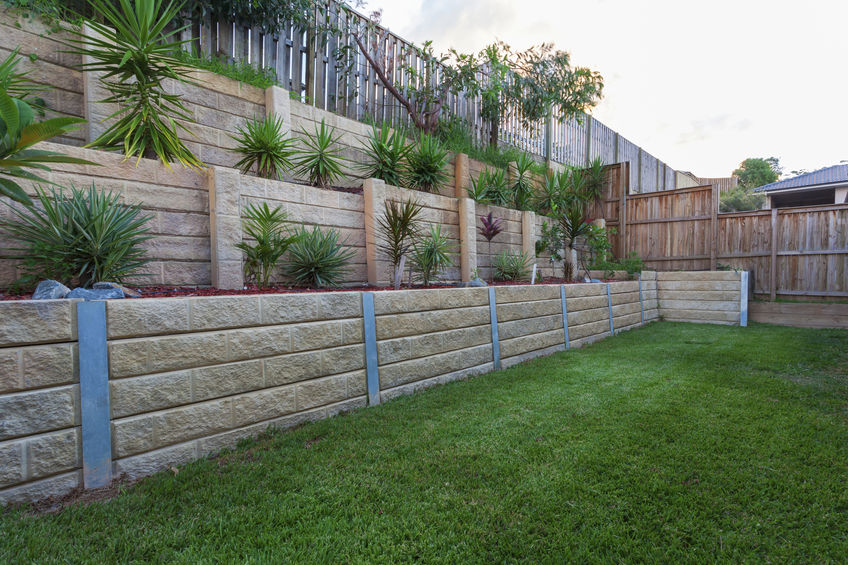-
Brick
Brick is a very common material when it comes to building retaining walls. It offers an amazing appeal that is inviting and warm.

Pros
- Easy to Maintain
Brick can be said to be quite a low-maintenance building material for building a retaining wall. You do not need to do a lot to maintain this material because it retains color quite well, meaning you do not have to worry so much about painting.
- Eco-Friendly
Bricks come from eco-friendly and abundant materials, which include clay and shale. Bricks can even be repurposed and used for other landscaping projects like building walking paths. This means that by building with brick, you will be doing an eco-friendly project.
- Weather and Fire Resistant
Bricks do well upon exposure to the elements. They are not easily damaged by weather conditions like dampness and they can withstand abuse by flying debris. Bricks are also not combustible, meaning they cannot accelerate a fire.
- Durable
Bricks are quite durable and should last for quite some time. However, they are not as durable as stone but still do a good job.
Cons
- Quite Expensive
For retaining wall building materials, bricks fall into the higher category. They can hence be quite expensive when used to build a retaining wall.
- Color Limitations
Bricks have limited color options. Compared to other materials for building retaining walls, they do not offer the same kind of variety in terms of color.
- Very Heavy
Bricks are quite heavy, which makes them a bit hard to use for building. This is something you have to pay attention to because it can lead to increased installation prices.
- Limited Flexibility
Bricks have limited flexibility because they are quite hard to replace, especially in cases of a damaged brick.
-
Stone
Stone offers an amazing look while providing you with many options to play with in terms of the design you want to achieve for your retaining wall.
Pros
- Looks Beautiful
Stone has an amazing look that is beautiful and fits quite well into any kind of traditional setting. Since you will be working with smaller blocks, you will have the ability to experiment with different colors and textures.
- Offers Flexibility
Natural stone is great because it fits in any kind of situation that comes to your mind. In addition, you do not need a mortar or special connections to keep the wall together.
- Traditional Method
Natural stone is an old and reliable material that has been used for many years for grade transitions.
- Durability
Stone is quite durable, meaning it can last you for ages.
Cons
- Quite Expensive
Stone is regarded as pristine and thus comes at a high price.
- Bad Drainage
Natural stone offers a serious problem when it comes to drainage.
- Bulky Material
Natural stone is a heavy building material, making its use quite labor-intensive.
- Diverse Building Blocks
Stone comes in different pieces that are of distinct sizes. Working with all these different pieces might be a joy to some builders but a chore for others.
A retaining wall can be referred to as a structure that supports soil mass laterally, so the soil on different sides of the wall is properly retained at different levels. Retaining walls come in handy because they help bind two soils between two distinct elevations in situations where possessing slopes are undesirable. These situations can for instance be when building a basement. However, some common instances are landscaping and gardening. Brick and stone are some of the most common materials for building retaining walls. This article has described these two materials in depth plus other materials that you should consider for building a retaining wall. If you are still unsure of the right material to use, you might want to reach out to an expert for further advice.
